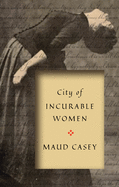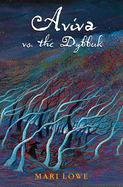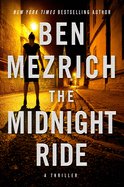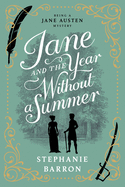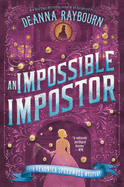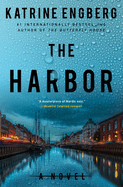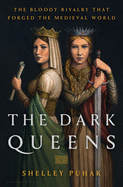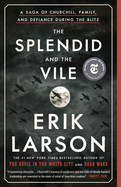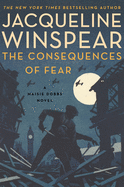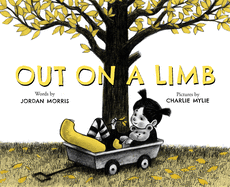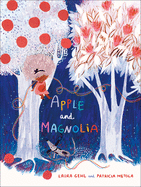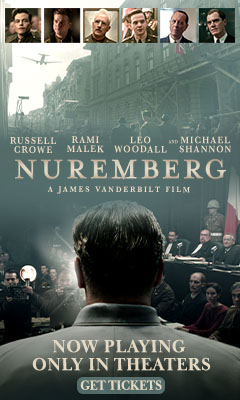Friday, February 25, 2022
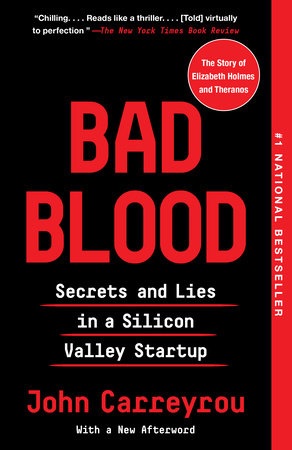 Silicon Valley and tech startups can seem like another world. Books like John Carreyrou's Bad Blood: Secrets and Lies in a Silicon Valley Startup (Vintage, $16.95) have provided fascinating, if unflattering, looks inside that world. The story of Elizabeth Holmes and Theranos proved unusual and shocking enough to catch Hollywood's attention; it inspired a documentary, a Hulu miniseries and a film starring Jennifer Lawrence. Holmes's meteoric rise and fall, for all of its strangeness, however, follows a familiar pattern of mercurial, charismatic founders and executives whose grandiose visions earned their companies seemingly endless venture capital funding, all while questions about the soundness of their businesses were largely ignored.
Silicon Valley and tech startups can seem like another world. Books like John Carreyrou's Bad Blood: Secrets and Lies in a Silicon Valley Startup (Vintage, $16.95) have provided fascinating, if unflattering, looks inside that world. The story of Elizabeth Holmes and Theranos proved unusual and shocking enough to catch Hollywood's attention; it inspired a documentary, a Hulu miniseries and a film starring Jennifer Lawrence. Holmes's meteoric rise and fall, for all of its strangeness, however, follows a familiar pattern of mercurial, charismatic founders and executives whose grandiose visions earned their companies seemingly endless venture capital funding, all while questions about the soundness of their businesses were largely ignored.
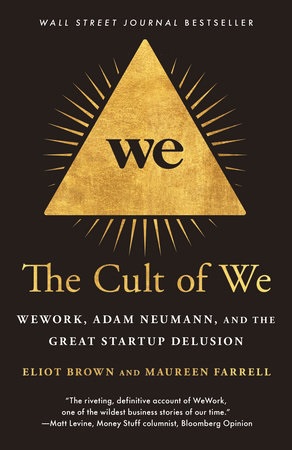 The Cult of We: WeWork, Adam Neumann, and the Great Startup Delusion by Eliot Brown and Maureen Farrell (Crown, $18) suggests in its title the frenzy of adulation that builds around companies like WeWork until reality finally intrudes. After the fact, media narratives often fixate on the more bizarre actions and pronouncements of headstrong founders like Adam Neumann, and it is easy in retrospect to view the rise and fall of once-promising startups as a kind of morality play.
The Cult of We: WeWork, Adam Neumann, and the Great Startup Delusion by Eliot Brown and Maureen Farrell (Crown, $18) suggests in its title the frenzy of adulation that builds around companies like WeWork until reality finally intrudes. After the fact, media narratives often fixate on the more bizarre actions and pronouncements of headstrong founders like Adam Neumann, and it is easy in retrospect to view the rise and fall of once-promising startups as a kind of morality play.
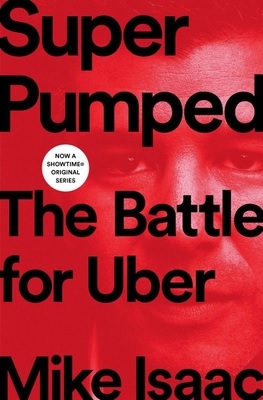 Books like The Cult of We and Bad Blood capture how the eccentricities of founders are normalized, or even seen as signs of prophetic genius, inside the startup world. As documented in Mike Isaac's Super Pumped: The Battle for Uber (W.W. Norton, $18.95), that doesn't mean that investors will maintain their patience forever. Uber and WeWork would eventually see their founders booted, their still-enormous companies going on without them. More disturbingly, the books end with few lessons learned and often plenty of money made by the people involved, leaving little doubt that startup messiahs will continue to flourish, likely inspiring another wave of books and movies after their promises fall short. --Hank Stephenson, manuscript reader, the Sun magazine
Books like The Cult of We and Bad Blood capture how the eccentricities of founders are normalized, or even seen as signs of prophetic genius, inside the startup world. As documented in Mike Isaac's Super Pumped: The Battle for Uber (W.W. Norton, $18.95), that doesn't mean that investors will maintain their patience forever. Uber and WeWork would eventually see their founders booted, their still-enormous companies going on without them. More disturbingly, the books end with few lessons learned and often plenty of money made by the people involved, leaving little doubt that startup messiahs will continue to flourish, likely inspiring another wave of books and movies after their promises fall short. --Hank Stephenson, manuscript reader, the Sun magazine
The Stone World
by Joel Agee
Following his memoirs (Twelve Years; In the House of My Fear) and translations, Joel Agee's first novel, The Stone World, is a dreamy, haunting immersion in the mind of a child in a gravely serious adult world. The story spans mere months in the life of six-and-a-half-year-old Peter, who prefers to go by Pira, as his Mexican friends pronounce his name. This is a quietly profound study of boyhood, in some ways almost humdrum: Pira writes a poem, borrows a significant item from a parent and breaks it (and lies about it), falls out with a friend, learns about the world. But the backdrop is late-1940s Mexico, where Pira lives with his American mother and German communist "second father" (his biological father lives in New York), and they rub shoulders with a range of characters: American, Hungarian, Mexican, rich, poor, activists and organizers and artists, including Frida Kahlo.
Pira is prone to involved imaginings, including dreams and waking visions. Through the eyes of this curious, philosophical, sensitive child, the whole world is fresh and new, colorful, beautiful and dangerous. Joel Agee is the son of celebrated novelist James Agee, and Pira's life resembles his creator's, who likewise lived in Mexico with his mother and German stepfather in the late 1940s. The politics of his parents and their friends are initially boring to young Pira, but real-life risks and even arrests bring the issues home to him. In the hands of such a skilled and nuanced writer, this material exudes both beauty and menace. --Julia Kastner, librarian and blogger at pagesofjulia
Discover: Immediately following World War II, an intuitive boy from the U.S. in Mexico carefully observes his changing world in this scintillating work of literary fiction.
City of Incurable Women
by Maud Casey
At just 128 pages, Maud Casey's compelling City of Incurable Women--ostensibly a historical novel featuring 19th-century French women institutionalized with diagnoses of hysteria--might invite an expeditious single-sitting read. That sparseness obscures its intricate density: hardly straightforward narrative, City of Incurable Women is a fascinating, multi-layered interaction between Casey's pithy words on the page and history's virtual elision of the titular "incurable women." Readers may well want side-by-side access to sources of additional information for a more satisfying, enhanced experience.
In 19th-century Paris, the Salpêtrière hospital was the domain of Jean-Martin Charcot, often called "The Father of Neurology." Casey opens her first chapter with a Charcot quote, almost as a warning epigraph: "The great asylum... contains a population of over 5,000 people, including a great number called incurables.... In other words, we are in possession of a kind of living pathological museum, the resources of which are considerable." Charcot's "Tuesday Lessons," a weekly public neurological demonstration displaying actual patients, were famed events. Four of Charcot's "best girls" take space here by name: "delicious" Augustine, committed at 15; stigmatic Louise, who bled every Friday; abandoned and abused Geneviève, who cut off her own left nipple; and "queen" Blanche, whose "death of [her] diagnosis" mysteriously (or not) coincided with Charcot's own passing.
"The doctors' stories have endings," Geneviève shrewdly comments. "My stories never finish." They also can't be complete since these stories exist only as other people's observations, research, records--and predominantly filtered through a limited, centuries-old male gaze. With acute empathy, Casey is here as witness and scribe. --Terry Hong, Smithsonian BookDragon
Discover: In this short novel, Maud Casey masterfully magnifies the stories of "incurable" women in Paris's 19th-century Salpêtrière hospital.
Mystery & Thriller
The Midnight Ride
by Ben Mezrich
If Dennis Lehane and Dan Brown collaborated on a novel, it might be The Midnight Ride. Ben Mezrich's secret-history thriller is fueled by a chase through the streets of Boston, an adrenaline-pumping adventure that makes Paul Revere's historic ride look like a Sunday stroll.
The Midnight Ride introduces Hailey Gordon, MIT grad student of applied mathematics by day and card counter by night. As the novel opens, security at the hotel and casino Encore Boston Harbor is on to her, so she flees to a random hotel room. There she encounters a dead body, and then in walks Nick Patterson, freshly sprung from prison. Nick is on a job that he "inherited" from a recently deceased fellow inmate, but he's determined to keep his nose clean. As he sees it, there is "nothing illegal about meeting a guy in a hotel room, showing him something in a little plastic bag, in exchange for a nice fat down payment." That "something" concerns the Gardner Museum art heist of 1990, which Mezrich uses to launch a Da Vinci Code-esque adventure in which Hailey and Nick become fugitives--with the Bunker Hill Monument, the Boston Tea Party Museum and the USS Constitution among their hidey-holes.
Mezrich (The 37th Parallel) subscribes to the Schoolhouse Rock! school of no-pain history lessons: any gaps that readers have in their knowledge of the Revolutionary War will be filled by a couple of amusingly rivalrous Paul Revere scholars. He also subscribes to the Lehane school of crime-writing, in that readers should expect to sympathize with The Midnight Ride's morally shifty cast. --Nell Beram, author and freelance writer
Discover: Ben Mezrich uses Paul Revere's legacy and the Gardner Museum art heist to craft a delirious, whiplash-generating Boston thriller.
Jane and the Year Without a Summer
by Stephanie Barron
Jane and the Year Without a Summer is the 14th installment in Stephanie Barron's (Jane and the Canterbury Tale) fascinating, impeccably researched series.
Jane Austen and her sister, Cassandra, are traveling to Cheltenham Spa to take the waters. They expect to spend a quiet two weeks enjoying a change of scenery and society but, as luck would have it, their guest house is teeming with eccentric boarders. The weather is dreary due to the global impact of a volcanic eruption in the South Pacific. With frequent downpours of rain, Jane and Cassandra find themselves spending many hours in the company of their fellow guests. Despite their misgivings, they are drawn into others' personal drama, particularly those of a chair-bound lady and her companion.
When a spoiled pup belonging to an especially annoying guest dies abruptly, however, Jane suspects misadventure by poison. But why would someone kill a beloved pet? Then, a masquerade ball ends in a terrifying fire, and Jane and her friends barely escape in time. Their shock heightens when a body is found in the rubble and the victim is revealed to be closely connected to a guesthouse boarder. While all clues seem to point directly to one suspect, Jane has her doubts. She's been considering all available information and shrewdly reaches her own conclusions. Exposing the real killer, however, may endanger her own life.
The world of Regency England comes alive through the vivid historical detail underpinning this intriguing novel, while Jane and the secondary characters are both engaging and authentic. Whether first-timers or serious followers of Jane Austen, readers will thoroughly enjoy this take on the legendary author's life and sleuthing skills. --Lois Faye Dyer, writer and reviewer
Discover: In this vivid cozy mystery set in 1816 England, Jane Austen and friends enjoy elegant society and solve a murder.
An Impossible Impostor
by Deanna Raybourn
In An Impossible Impostor, Deanna Raybourn (An Unexpected Peril) brings readers a new entry in her delightful Victorian mystery series featuring Veronica Speedwell, a natural historian and amateur detective. Veronica has been to the ends of the world and back in search of rare and unusual butterflies. But in recent years, her investigative adventures with Stoker, her business and romantic partner, have kept her busier than her lepidopterology.
Stoker and Veronica have just solved a mystery abroad and are back home in London when they are approached by Sir Hugo Montgomerie, the head of Special Branch of Scotland Yard. Family friends of Sir Hugo are shocked by the sudden reappearance of Jonathan Hathaway, their long-lost eldest son, whom they presumed died in the eruption of Krakatoa years earlier. The Hathaways are divided: some of them believe this person is Jonathan, while others insist he is not. Given that Jonathan is the heir to the estate, a great deal of money is on the line. Sir Hugo believes that Veronica, who was traveling near Krakatoa just before its eruption, may have recently seen the adult Jonathan. He sends Veronica and Stoker to the Hathaway family home to see if they can determine if Jonathan is who he claims to be.
Enigmatic and surprising, An Impossible Impostor will surprise long-time Veronica fans. Those new to the series are sure to enjoy Veronica's imperturbable joie de vivre as she uncovers shocking truths about the Hathaways--and about her own past. Well-researched and amusingly written, An Impossible Impostor is historical mystery at its finest. --Jessica Howard, bookseller at Bookmans, Flagstaff, Ariz.
Discover: In this engaging historical mystery, a Victorian butterfly-hunter must face demons from her past.
The Harbor
by Katrine Engberg, transl. by Tara Chace
At one point in The Harbor--Katrine Engberg's third Kørner and Werner mystery (after The Butterfly House), translated from the Danish by Tara Chace--a character thinks, "Oh, Copenhagen, you wonderful, village-size capital!" By now, Engberg's readers will have come to feel the same way. The city serves as a favorite character in a series with stiff competition for the title.
Double burdens plague the Copenhagen Police Investigations Unit: a teenage boy from a wealthy family is missing, and a dead man's body is found at an incineration plant. Is there a connection? Did the boy run away? A cryptic typewritten note left for his parents suggests that the boy has been kidnapped. The family has received threatening letters before, but after 10 years together, fussbudget detective Jeppe Kørner and his temerarious partner, Anette Werner, have learned to look hesitantly at obvious conclusions.
Engberg reliably showcases Copenhagen's attractions throughout the series, and in The Harbor shines a light on Thorvaldsens Museum, named for the Danish sculptor--although it's Ireland's Oscar Wilde who plays a more critical role. As ever, Kørner's and Werner's personal lives provide supplemental drama; he's skittish about moving in with his girlfriend, and she's attracted to a man who isn't her husband. Suspense is generated by a wandering perspective, and Engberg tracks characters whose innocence or culpability is unclear until well into the story. Of course, always blameless is retired academic Esther de Laurenti, to whom Kørner has turned for help throughout the series. It takes a village indeed. --Nell Beram, author and freelance writer
Discover: The multilayered third entry in the Kørner and Werner series finds the odd-couple Copenhagen detectives trying to connect the dots between a missing teenager and a murder.
Romance
I'm So (Not) over You
by Kosoko Jackson
As apparent in the title of I'm So (Not) over You, YA author Kosoko Jackson's first novel for adults, Kian Andrews is so (not) over his ex. So what if Hudson Rivers is handsome, smart and heir to a family fortune? The two didn't stay together when they dated in college, so Kian sees no problem in doing Hudson a favor and showing up for a family dinner as his (fake) boyfriend to appease Hudson's demanding parents. But even Kian knows he's lying to himself: "Look up Bad Idea on Google, and our helpful search engine will bring up, Did you mean: Kian Andrews's choices whenever they involve Hudson Rivers?" When one pretend date spirals into the pair attending a family wedding, emotions run high--and Kian and Hudson are finally forced to reckon with their feelings for one another.
It's never precisely clear why Kian and Hudson broke up in the first place, which can sometimes make the will-they-won't-they tension of their second-chances love story unclear. But Jackson (Yesterday Is History) has a knack for building nuanced and multilayered characters, which makes it impossible not to root for these two. Kian reflects on feeling out of place as a "Black guy in Boston," as well as his desperation as an "overworked, underpaid twentysomething" trying to succeed as a journalist. Hudson's history with his family, one of the richest Black families in the United States, gives depth to his moody, brooding personality. Ultimately, that character development is what makes this queer, Black romantic comedy such a delight. It is, from start to finish, full of laughs and heart. --Kerry McHugh, freelance writer
Discover: Kosoko Jackson's first novel for adult readers is a heartfelt queer, Black romantic comedy about second chances and fake dating.
History
The Dark Queens: The Bloody Rivalry that Forged the Medieval World
by Shelley Puhak
A thousand years before the famous family rivalry of Queen Elizabeth I of England and Mary, Queen of Scots, two sisters-in-law and queens in Merovingian France, whose histories were absorbed into legend, fought a civil war. In The Dark Queens: The Bloody Rivalry that Forged the Medieval World, Shelley Puhak's nonfiction debut, Queen Brunhild and Queen Fredegund are restored to center stage.
Brunhild (also referred to as Brunhilda) was a Visigothic princess; Fredegund initially lived as an enslaved woman in the palace. Their husbands--Sigibert I of Austrasia and Chilperic I of Neustria, respectively--were sons of Clothar I. Each inherited a portion of the vast kingdom of the Franks, which Clothar successfully reunified. Both queens would outlive their husbands, serve as regents for their sons, command armies and war against each other for decades. Puhak presents a vivid picture of how they skillfully preserved their lives, their power and their families.
After their deaths, Brunhild's and Fredegund's stories were retold during the Carolingian dynasty as a cautionary tale about women meddling in statecraft. Although the accomplishments of both women were minimized, pieces of their legend live on in opera, in Shakespeare and in today's fantasy novels. Puhak (Guinevere in Baltimore: Poems), whose nonfiction work has been published in the Atlantic and Best American Travel Writing, unearths the real women and traces how their stories were used. She also imagines what it might mean if girls found them featured more prominently in their textbooks. History readers will be enthralled. --Kristen Allen-Vogel, information services librarian at Dayton Metro Library
Discover: In this engrossing history, two queens who engage in the cutthroat world of statecraft at the dawn of the Middle Ages.
Now in Paperback
The Splendid and the Vile: A Saga of Churchill, Family, and Defiance During the Blitz
by Erik Larson
The life and times of Winston Churchill may be among the most well-trod ground in historical nonfiction, but perennial bestseller Erik Larson (The Devil in the White City; Dead Wake) makes it feel fresh, with new sources, a tight focus and a propulsive storytelling instinct. Named a Best Book of the Year by numerous media, including the New York Times, Bloomberg, the New York Post, Fortune and NPR, The Splendid and the Vile follows the first year of Churchill as prime minister, beginning with Hitler's invasion of the Low Countries, through the Battle of Britain and the signing of the Lend-Lease Act. Larson uses letters and diaries, some of which have never been published, to depict the Churchill family and their closest circles in vivid detail.
Hitler, initially reluctant to wage war on Britain, was incensed by Churchill's refusal to negotiate peace. In preparation for an amphibious assault across the English Channel, he ordered the destruction of the Royal Air Force. Bombings in London and Berlin soon escalated into massive attacks against British civilians, the Blitz. Larson depicts Churchill as an indomitable leader, inspiring a fighting spirit in his cabinet and the public. Yet Churchill's family, staff and colleagues sometimes suffered under his constant demands or were plagued by personal problems of their own. His son Randolph incurred enormous gambling debts. Daughter Mary resisted her parents' protectiveness by joining the Women's Voluntary Services and eventually leading an anti-aircraft battery. Wife Clementine fretted over her children's personal lives while entertaining ministers and foreign dignitaries at the P.M.'s country escape, Chequers. The Splendid and the Vile is a fascinating mix of the largest and smallest scales in human affairs. Larson blends domestic drama with the destruction of cities to riveting effect. --Tobias Mutter, freelance reviewer
Discover: Previously unpublished sources and compelling narration refresh the record of Winston Churchill's first year as prime minister.
The Consequences of Fear
by Jacqueline Winspear
In The Consequences of Fear, the 16th entry in Jacqueline Winspear's charming Maisie Dobbs series, London is being decimated by the Blitz. Twelve-year-old Freddie Hackett is serving as a message runner for the government, making his way through bombed-out areas during the blackout, which would impede cars and bicycles. One dark night on a run, Freddie witnesses a struggle that he thinks ends in a stabbing. Shocked, he continues on to deliver his message, only to come face to face with the possible murderer. But by the time he reports the crime, the body (and the murderer) have both vanished.
The police think Freddie is delusional, traumatized by the things he has experienced during the Blitz. But Maisie, ever empathetic, is convinced that Freddie actually saw something. She begins a side investigation that puts her at odds with her current job working for a top-secret government agency--an agency that most emphatically does not want Maisie digging around for a murderer in the middle of the war effort, especially a murderer who may have diplomatic ties to the British government.
Gently paced and nuanced, The Consequences of Fear is a thoughtful look at the repercussions of war and trauma. Maisie's friends and relatives are affected by nearly every facet of the war, as are the Hacketts and countless other families. Winspear (To Die but Once) does a superb job of capturing the determined spirit of the British populace as they face down the Nazi threat. --Jessica Howard, bookseller at Bookmans, Tucson, Ariz.
Discover: In this atmospheric historical mystery, a boy witnesses a stabbing during the Blitz.
Children's & Young Adult
Aviva vs. the Dybbuk
by Mari Lowe
A lonely 11-year-old grieves her murdered father, protects her fragile mother and heals an estranged friendship, all while vexed by a mischievous ghost, in Mari Lowe's stirring and suspenseful debut, Aviva vs. the Dybbuk.
Aviva's existence divides into before and after the "accident" that took her father's life. Before, Aviva's father was the shammas, or caretaker, for their shul (synagogue). Before, Aviva was best friends and neighbors with Kayla. Before, Aviva's Ema was a popular morah (teacher); before, Ema at least left the house. Aviva and Ema now live at the mikvah where Ema works as the attendant. A meddlesome and sometimes dangerous dybbuk, or restless ghost, "came with" the purifying pool used for religious immersion and has been Aviva's constant, haunting companion ever since. Now, Aviva and Kayla are reconciling their distanced relationship while planning their sixth grade's Bas Mitzvah Bash, but the dybbuk threatens the girls and their progress. Meanwhile, a series of antisemitic hate crimes at the shul rekindles the trauma surrounding Abba's death.
Lowe offers a fresh and carefully plotted ghost story exploring melancholic themes and their mental health ramifications. While probing weighty topics, Lowe celebrates the resilient strength of community, in particular the "joy... [of a] circle of Jewish women.... A group united... regardless of our ages and our experiences." Religion seamlessly suffuses the story, including passing references to a kosher kitchen and the halacha (Jewish religious laws) regarding gendered public dancing, but Lowe steers clear of dogmatism. Orthodox Jewish readers should be delighted by the everydayness of this representation; others will likely appreciate the included glossary. A deliberate and engrossing story about loss, grief and the healing power of belief. --Kit Ballenger, youth librarian, Help Your Shelf
Discover: A lonely Orthodox Jewish tween deals with the practical and emotional repercussions of losing her father in this complex and compelling middle-grade ghost story.
Out on a Limb
by Jordan Strickland Morris, illus. by Charlie Mylie
Debut author Jordan Morris and illustrator Charlie Mylie (Something for You; Anything with You) have built Out on a Limb, their divine feelings-front picture book, around one kid's experience with a temporary disability--and a permanently wonderful grandfather.
Lulu has a broken leg, which means lots of "special attention" plus a "sympathy trove." On the downside, because of her cast, she must "think of new ways to do ordinary things." Lulu's frustration with her injury is gradually winning out over its novelty, so when her cast is finally removed after six weeks, she's surprised to feel something other than elation. Not only does she miss the spotlight the cast invites, but she's finding reentry into the ambulatory world a little scary.
Morris leaves no feeling unturned in Out on a Limb, for which Mylie has created a pigtailed protagonist whose every emotion commands her face like a newspaper headline. Mylie introduces to his largely grayscale, digitally tweaked graphite art a glowing yellow that highlights, among other objects of interest, Lulu's cast and the envelope containing the letter that her perceptive grandfather mails to her. Scattered throughout the book are wordless panels showing the waylaid letter's circuitous journey until it lands in a bird's nest; Lulu retrieves it after screwing up her courage and climbing a tree. "Some things just need a little extra time," Grandpa tells Lulu regarding the letter's delayed arrival, but of course he is talking about something else, too. His letter makes all the difference in Lulu's emotional recovery, which, Out on a Limb reminds readers, can sometimes be more difficult than the physical piece. --Nell Beram, freelance writer and YA author
Discover: In this emotionally resounding picture book, a girl who has broken her leg finds herself feeling blue after her cast comes off and she must return to the ambulatory world.
Apple and Magnolia
by Laura Gehl, illus. by Patricia Metola
Prolific board and picture book author Laura Gehl (Baby Scientist series) and illustrator Patricia Metola (Love from Alfie McPoonst, the Best Dog Ever) use whimsical illustrations and compact but rhythmic text to tell the story of an apple tree reaching out to help its nearby friend, a magnolia tree.
Britta, a girl with warm brown skin and masses of pink hair, lives with her white and blue-haired father, her brown-skinned and blue-afro'd sister, Bronwyn, and her brown-skinned and white-haired nana. This loving family makes their home in the country, where Britta's favorite companions are the titular trees, best friends Apple and Magnolia. When Magnolia begins to sicken and lose her leaves, Britta is concerned and looks for a solution. She feels sure that Apple can help her friend, but Dad and Bronwyn aren't too sure. In what becomes a refrain, "Dad said, nicely, that he didn't think Magnolia would survive the winter." Bronwyn adds, "not as nicely, that Magnolia absolutely, positively would not survive the winter." Nana, however, is very encouraging and tells Britta she needs to have "a plan to help Magnolia." And so, Britta sets out to ensure that Apple will save Magnolia.
Though this endearing picture book has the quality of a fable, it is an original, modern story built around the idea that trees are able to communicate with each other (as described in a short author's note at the book's beginning). Perfect for reading aloud to an individual child or a group, Apple and Magnolia could be used to help children explore the growing cycle, the importance of cooperation and friendship, and the wonders of nature. --Melinda Greenblatt, freelance book reviewer
Discover: New information about trees and their ability to communicate inspires this delightful picture book about a girl's love for the natural world.
| Advertisement nuremberg--now playing in theaters |



